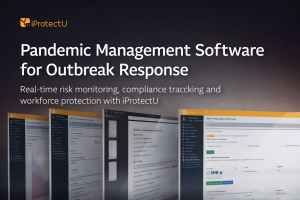Dangers of Manual Handling in the Workplace
Improper techniques or heavy loads may cause muscle strains, back pain, and even serious injuries like slipped discs. Effects of manual handling can also include joint pain, hand and foot injuries, burns and falls.
Why Manual Handling Risk Assessments Are Crucial
Prevent Injury: Risk assessments help identify manual handling hazards before accidents occur.
Proactive Approach: By proactively identifying risks, employers can implement control measures, for example the provision of mechanical lifting aids, safety training, and improved workstation design.
Employee Wellbeing: Risk assessments demonstrate a commitment to safeguarding employees from injury. This promotes a healthy and positive work environment, reducing absenteeism and boosting morale all round.
Reduced Costs: Risk assessments minimise workplace accidents and the associated costs they incur, for example medical treatment, compensation, and lost productivity.
Increased Efficiency: A safe work environment enables and empowers employees to perform tasks with greater confidence and efficiency.
Legal Compliance: Workplace regulations mandate that employers assess the risks associated with manual handling. The absence of suitable and sufficient risk assessments can lead to legal repercussions and fines.
Guidelines for Conducting a Manual Handling Risk Assessment
Identify Tasks: List all the tasks involving manual handling, like lifting, carrying, pushing, or pulling objects.
The TILE Approach
TILE is an acronym, used in the workplace to assist employers and managers in carrying out manual handling risk assessments. TILE covers the four key areas of manual handling and should be carefully considered before completing any manual handling tasks. It helps determine whether a task is safe to carry out.
- Task: Frequency, duration, awkward postures, use of force.
- Individual: Worker capabilities, strength limitations, fatigue factors.
- Load: Weight, shape, size, surface texture, potential for movement.
- Environment: Floor conditions, temperature, lighting, space constraints.

Evaluate Risks: Determine the likelihood and severity of potential injuries.
Control Measures: The need for manual handling should be eliminated entirely if feasible. If not possible, consider solutions such as mechanical aids, team lifting and manual handling safety training.
Record Findings: Document the assessment process, the identified risks, and the implemented control measures.
Review and Update: Review the risk assessment regularly, particularly after changes in tasks, equipment, or workplace layout.
Employers should watch out for the following signs, where intervention may be necessary; workers breathing heavily and sweating, workers complaining of fatigue, workers who are reluctant to perform a particular task, the unavailability of mechanical aids to assist with the lift.
iProtectU Risk Assessment Software
Integrating manual handling risk assessments with a comprehensive EHS software system such as iProtectU can significantly enhance workplace safety. This systematic approach proactively identifies hazards in lifting tasks by evaluating factors like load weight and worker capabilities.
The iProtectU software enables the user to create, share and edit manual handling risk assessments with ease. The user can avail of pre-installed fully editable manual handling risk assessment templates. Actions can then be assigned with fully automated risk mitigation options.

The risk assessment process facilitates clear communication of risks and safe practices to employees.
Regular risk assessment allows for continuous improvement, with ongoing monitoring and refinement of manual handling practices.








